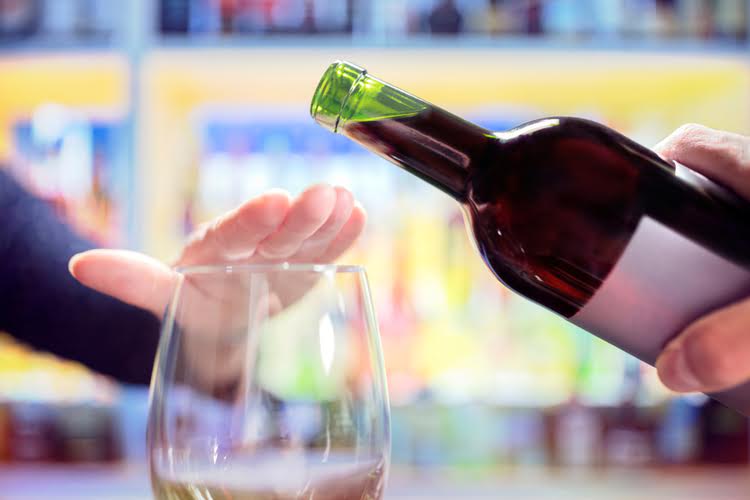Youth alcohol consumption is a critical issue, as early drinking can lead to long-term health problems and addiction. The map of the percentage of people ages who used alcohol within a month reveals that states like Vermont and New Hampshire have higher rates of underage drinking. This could be related to the states’ smaller, more close-knit communities where youth might have easier access to alcohol. Another third of the adult population reports drinking very little—fewer than three drinks per week. Finally, the last 1 to 4 percent of the population averages 10 or more drinks per day. Almost all people being treated for alcoholism report drinking this much, although this level of consumption is not a hard and fast definition of the disorder.
- There is no clear evidence that high overall consumption (particularly in moderate quantities) is connected to the onset of alcohol dependency.
- This category includes metrics such as flag design, symbolism, and history, and contains many groupings of flags based on their colors.
- Binge-drinking is a significant problem in Wisconsin, and alcohol-related deaths are more likely to involve older, long-term users.
- He is keen on decoding tech trends, examining mobile applications, and enhancing general tech awareness.
- The median U.S. state still spends over $3.5 billion a year dealing with the aftermath of excessive drinking.
- In contrast, Asian Americans have been found to be less affected by alcohol use disorder and exhibit lower rates of alcohol-attributable injuries.
So are people accessing these treatments?

At the end of this topic page, we provide a number of potential sources of support and guidance for alcoholism statistics those concerned about uncontrolled drinking or alcohol dependency. Data on the share who don’t drink alcohol by gender and age group in the UK is available here. Here, we see particularly high levels of alcohol abstinence across North Africa and the Middle East.
The Dimensions of Drinking

Drinking has also declined 11 points among non-Hispanic White adults, while it has been fairly steady at around 50% among people of color. Nevertheless, Sober living house even the temperance societies realized that this transformation would not occur overnight. The amendment gave people a year to dispose of their existing stocks, and the Anti-Saloon League helped Congress write legislation to enforce the amendment. Thus was born the Volstead Act, a complicated and often ambiguous legal code. At Ria, we offer weekly meetings with certified counselors to help members stay on track and build skills for long-term change.
50% of the college students who drink also binge drink.
Peters, focuses on drinking and smoking habits by U.S. county, providing a more granular view of substance use. It shows that counties in the Midwest and Appalachian regions have higher rates of both drinking and smoking. These patterns often correlate with socioeconomic factors, including lower income levels and higher unemployment rates, which can contribute to higher substance use as a coping mechanism. The maps below show the percentage of underage alcohol use and underage binge drinking by U.S. states. In the past two decades, alcohol consumption in the U.S. has risen to reach 2.35 gallons (8.9 liters) of ethanol per capita. Americans’ drinking habits are shifting amid the medical world’s reappraisal of alcohol’s health effects.
- Drinking alcohol is a quintessential part of celebrations in many parts of the world, including the United States.
- Per capita ethanol consumption from beer by region, United States, 1977–2021.
- Alcoholism statistics show that general drinking in the U.S. increased by 11% from 2002 to 2013, and high risk or binge drinking rose by nearly 30% overall.
Even more concerning is that 6% of the adult population qualifies as heavy drinkers, meaning they consume 8+ drinks per week for women and 15+ for men. Among these heavy drinkers, nearly all also binge drink, illustrating a dangerous overlap that raises the risk of alcohol-related diseases, accidents, and long-term mental health challenges. These numbers reflect a growing public health concern, especially among young adults and middle-aged groups, and highlight the need for continued education, accessible treatment options, and early intervention strategies. Generally speaking, high rates of alcohol consumption are linked to a higher percentage of driving fatalities attributed to alcohol. For example, in North Dakota, 24.7% of adults report binge drinking or heavy drinking, the highest in the country. Corresponding to this, 46.7% of driving fatalities in the state are attributed to alcohol, compared to a national average of 30%.
In many Asian countries, spirits account for most of total alcohol consumption. Global trends on alcohol abstinence show a mirror image of drinking prevalence data. This is shown in the charts as the share of adults who had not drunk in the prior year and those who have never drunk alcohol. Heavy episodic drinking is defined as the proportion of adult drinkers who have had at least 60 grams or more of pure alcohol on at least one occasion in the past 30 days. An intake of 60 grams of pure alcohol https://zarabd.shop/the-twelve-steps-alcoholics-anonymous/ is approximately equal to 6 standard alcoholic drinks. Alcohol consumption – whilst a risk factor for a number of health outcomes – typically has the greatest negative impacts when consumed within heavy sessions.

However, as with suicides involving alcohol, it is impossible to unambiguously attribute these deaths to drinking, since so many other factors are invariably involved. For instance, drinking at work or in public is generally more risky than drinking at home, where family members and familiar surroundings can keep a drinker out of trouble. Even drinking at home can be dangerous if combined with late-night smoking or hazardous household chores. Though originally focused on self-improvement and exhortation, some of these groups developed political aims and fought for legislation at federal, state, and local levels to stem the ravages of alcohol.
Deja una respuesta